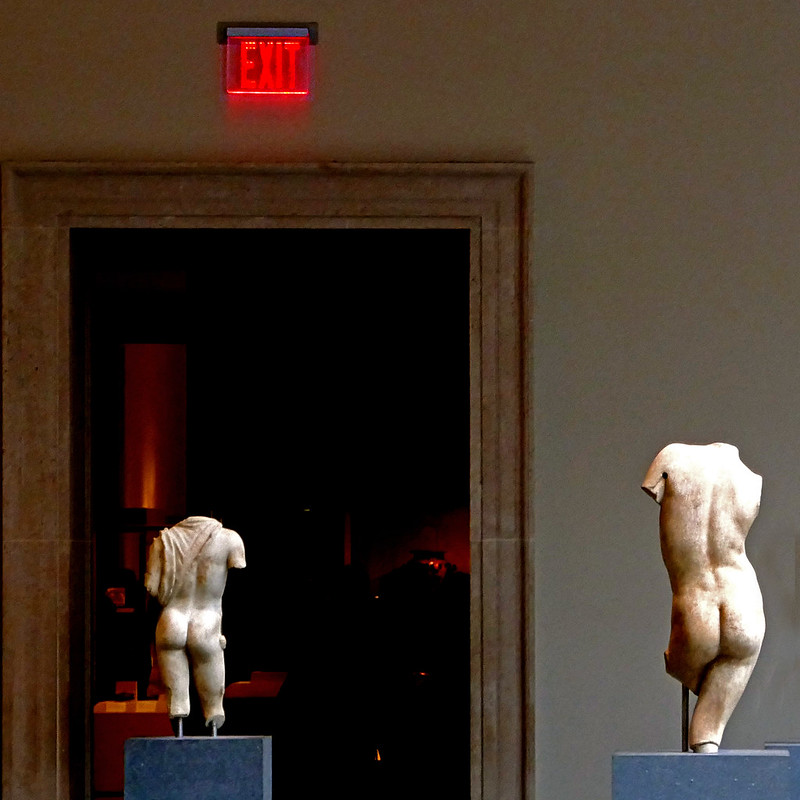Every year on November 14, the United Nations Educational, Scientific, and Cultural Organization (UNESCO) holds an International Day against Illicit Trafficking in Cultural Property. The day is observed to raise awareness of the ongoing global issue of the theft and illicit trafficking of cultural property that strips “people of their culture, identity and history”. Though it was first designated as such in 2019 at the 40th annual UNESCO General Conference, illicit trafficking of cultural property has occurred for centuries and has enabled many of the most famous museums and cultural displays of the modern era. The first international legislation governing this issue was the 1970 Convention on the Means of Prohibiting and Preventing the Illicit Import, Export and Transfer of Ownership of Cultural Property, which provides an “international framework for the prevention of theft and looting and the return and the restitution of stolen cultural property”. Despite this, museums around the world continue to display art, artefacts, and even human remains that have been taken without consent.
American museums have been particularly guilty of this, with looted artefacts being returned from the US to their countries of origin regularly. In 2015, Italian authorities retrieved 25 artefacts that had been previously displayed in American museums, some of which were covertly brought into the country by infamous antiquity dealer Giacomo Medici, who was convicted in 2004 for selling thousands of Greco-Roman art pieces stolen from Italy and around the Mediterranean. Earlier that same year, the Cleveland Museum of Art returned a 10th-century statue of the Hindu god Hanuman, which had been stolen from the Prasat Chen temple in Cambodia in the 1960s, finding its way to Cleveland in 1982.
Subhash Kapoor is a particularly notable figure in the field of illicit art smuggling with ties to several major American art museums, including the Metropolitan Museum of Art in New York, the Art Institute in Chicago, and the Asian Museum of Art in San Francisco. Kapoor was a former Madison Avenue art dealer who was indicted in New York in 2019, along with seven co-defendants, on charges of conspiring to traffic in stolen antiquities. He was also convicted and has spent more than a decade in prison in India on burglary and illegal export charges, following a trial in which he was found guilty of stealing 19 ancient idols and smuggling them to his Manhattan art gallery. The Metropolitan Museum of Art alone has been found to own 77 different works of art linked to Kapoor.
Thomas Hoving, the former director of the Metropolitan Museum of Art, is also notorious for his questionable collection techniques, calling his own style “pure piracy”. Hoving is a relic of museum days past, who relished in his Indiana Jones-esque reputation, apathetic to the plight of communities he pillaged. Last year alone, countless relics have been shipped back to their home countries from American museums. The most notable include three terra-cotta figures returned to Italy from the J. Paul Getty Museum in Los Angeles, 30 Cambodian antiquities from various institutions, and 29 Benin bronzes from the Smithsonian Institute to Nigeria.
British museums have also been guilty of proudly displaying looted objects, often stolen by the British Empire from their various former colonies. At one point the largest empire in history, British soldiers and colonists did not shy away from exploiting the artefacts of the very cultures they were trying to suppress. The British Museum itself is the biggest culprit, named by some as the “world’s largest receivers of stolen property”, much of which is not even on display. Some of the museum’s most famous exhibits are stolen from other countries, including the Parthenon Marbles, Rosetta Stone, and a collection of Maori heads. The Parthenon Marbles are a collection of marble architectural decorations from the Parthenon on the Acropolis in Athens that date back to 447-432 BC and have recently been the subject of contention between the Greek and British governments, who have been accused of showing “a lack of respect” for the dispute following the British government’s abrupt cancellation of negotiation meetings. The Rosetta Stone is a royal decree written around 196 BC, found in Egypt by Napoleon’s army in 1799, that was integral to helping linguists decode Egyptian hieroglyphs. Thousands of Egyptians over the years have demanded the stone be returned to its home country, calling its place in the museum “a symbol of Western cultural violence against Egypt”. The Maori heads are particularly egregious examples of cultural theft, as they were real human remains that were put on display for British onlookers to gawk at for centuries. Preserved Maori heads, known as Toi moko, are an important Maori cultural tradition honouring the dead. As of August 2023, the British Museum was still in possession of seven Toi moko, despite requests from the New Zealand government to return them to their original resting place.
Canadian museums are not free from culpability in the display of stolen cultural items and have been most predatory toward Indigenous groups. Over the last 70 years, a beaded Cree hood has found itself featured in frequent showcases in Montreal museums, even though researchers at the Aanischaaukamikw Cree Cultural Institute in Oujé-Bougoumou, Quebec, only learned of its existence in the last couple of years. Created sometime in the 1850s, the hood was an integral component of Cree spiritual life, intricately woven in a combination of cotton, wool, and decorative glass beads, and worn during weddings and hunting ceremonies. The Aanischaaukamikw team located the hood as part of a wider effort to reclaim and reunite Cree artefacts with their original peoples, putting out a worldwide call to museums asking for any information on the traditional hoods which Cree communities have been completely stripped of since the early 20th century.
Despite the return of a select few items, many groups still face an uphill battle in attempting to have their artefacts returned. Museums are reluctant to give up the items that bring them such viewership, former colonial governments have remained largely apathetic to the cause, and there is a widespread misconception among the public that artefacts must remain in these large Western museums to be ‘kept safe’. This idea is deeply flawed, echoing colonial assumptions that non-Western nations were backward or uncivilised, and must be addressed to move forwards in reuniting cultural groups with their own items. To redress the culturally devastating impact of illicit trafficking, governments and museums alike must work in tandem to right these historical wrongs.
Edited by Elena Lee

Liliana Mason is in her fourth and final year at McGill University, currently pursuing a B.A. in Political Science with a double minor in African Studies and Canadian Studies. She is particularly interested in African politics, the African diaspora, and the effects of climate change on human migration.

